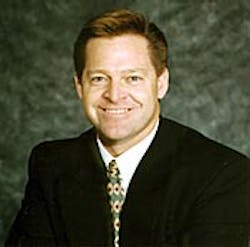Preparing for Active Shooters
After a number of incidents involving "active shooters" have made headlines (gunman at a Salt Lake City shopping mall, Virginia Tech tragedy, Amish schoolhouse shootings, etc.) in recent years, the question on many security managers' mind has been whether they were prepared to deal with such a situation. Certainly, active shooter threats present unique scenarios that extend far beyond the common break-ins, vandalism and accident disputes that most security and safety directors deal with on a regular basis.
Blackwater USA, a force protection training firm based out of North Carolina, is among the security-focused companies realizing this. They recently announced their new training program designed to prepare security and law enforcement officers for these "active shooter" situations. According to Blackwater Vice President Marty Strong, the basic premise behind the course is that it gives a unique chance for law enforcement and armed security "a way to train, test, and evaluate individual officers and units in a controlled, active shooter roll playing environment," exactly the kind of training that is missed in classroom training environments. SecurityInfoWatch.com caught up with Strong, a former decorated U.S. Navy Seal who has two decades of experience in special ops, this week to get some perspective on the need for active shooter preparations.
SecurityInfoWatch.com: Are most school security or school law enforcement departments ill-prepared for active shooter scenarios?
Strong: We really can’t speak for the status of school security in this country. To do so would likely require a thorough assessment by qualified security professionals, school by school. However the Active Shooter tactical procedure is growing in acceptance and usage nationwide.
SecurityInfoWatch.com: The standard response seems to be to amass and stage a high number of armed responders before engaging the active shooter. Is there an inherent weakness in that approach (i.e., that the shooter has more time inside the school to continue murders, etc.)?
Strong: Every situation we have examined is unique and requires first responding officers to evaluate and classify the event. The classic cordon, contain, negotiate process isn’t inappropriate. It fits the scenarios where suspects are barricaded – with or without hostages – but where no known injury has occurred. In this approach, if proof of injury can be determined – SWAT capabilities can be brought to bear to resolve the standoff. An active shooter scenario is more challenging because the first responders must not only classify the situation they are also expected to move to the sound of the guns and mitigate further bloodshed.
SecurityInfoWatch.com: What technologies should security/LEOs be paying attention to that can help them respond to active shooter situations that could crop up at schools or anywhere for that matter?
Strong: If surveillance technology is widely and appropriately deployed in a given area, and if the imagery is being monitored in real time, first responding officers could confirm eye witness reports that active shooting is indeed happening and where. The video surveillance system in London is an example of how large public areas can be monitored in support of law enforcement response and crisis planning. Of course, if shots are heard by these same officers when they arrive, [then] there is no requirement for technology to confirm the situation.
SecurityInfoWatch.com: Is this training that you feel every armed security or LEO should have who works in a school setting?
Strong: This is very appropriate for all LEOs and even for some armed security professionals. The course should be reviewed in light of the approved tactics and procedures for active shooter scenarios in each jurisdiction and in accordance with the policies of each law enforcement agency.
SecurityInfoWatch.com: What are some of the top lessons being explained in this training course?
Strong: First and foremost the course exposes students to the chaos, the lack of information associated with active shooter scenarios. Through the use of role players, and by manipulating the set up of our urban training facility, Blackwater Worldwide instructors construct situations that reproduce the active shooter experience. The tactical choreography and weapons usage issues are addressed but are secondary in importance to this highly realistic and experiential approach.
